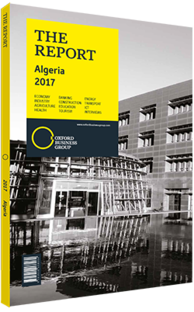Algeria's fiscal reforms seek to rebalance the budget
Given that Algeria’s hydrocarbons sector accounted for more than half of government revenues in 2014, it is hardly surprising that the collapse in oil prices from 2014 onward has hit public finances. From 8% of GDP in 2014, the deficit ballooned to 15.8% in 2015, before moderating to an estimated 14% in 2016. Algeria was able to postpone the bulk of the necessary adjustment in the public finances for three reasons: its national debt was relatively low at 8.8% of GDP in 2015, meaning it had scope to increase its borrowings; it received a large dividend from the Bank of Algeria in 2016, equalling 3.6% of GDP, with further such payments worth 4.5% of GDP expected in 2017; and it was able to draw down funds from the oil stabilisation fund to plug the deficit without needing to resort to borrowing.
Having built up a buffer in the stabilisation fund when energy prices were higher, the government was able to cushion the blow to the real economy when energy prices fell. However, the fund had been drawn down to its statutory floor by 2016, leaving the government with a choice between an increase in debt through recourse to borrowing and a stringent fiscal adjustment.
Ongoing Adjustment
The government opted for a medium-term budget framework, which aimed to cut the deficit to 3% of GDP in 2017, 2.7% of GDP in 2018 and a balanced budget by 2020. The IMF projected that government revenues would remain flat, at 30.8% of GDP in 2015 and 30.9% of GDP by 2018. The bulk of the adjustment will come on the spending side, with expenditure expected to fall from 46.6% of GDP in 2015 to 37.3% in 2017 and 33.5% by 2018.
However, in October 2017 the government announced that after two years of falling expenditures, a 25% increase in state spending was planned in 2018, and it expected the budget deficit to stand at 9% of GDP for the year. The government said it had drafted amendments to the Money and Credit Law to allow the central bank to lend directly to the public Treasury for the first time to fund budget deficits and public debt, and provide resources for the National Investment Fund. According to international media reports, this type of funding will be implemented for five years and will be accompanied by structural reforms. The increase in spending is expected to finance delayed projects in sectors such as education, health and water, and help fund subsidies for housing and basic foodstuffs.
Boosting Revenues
There is some help on the revenue side, with income from the hydrocarbons sector expected to rise from 10.4% of GDP in 2016 to 14.7% in 2017 on the back of increased production and a partial recovery in the oil price. In 2016 the authorities also increased the earnings ceiling to AD30m ($249,000) per annum for the single flat tax scheme, where the twin rates – 5% for the production or sale of goods and 12% for other activities – are applicable to sole traders and very small businesses. This expanded the number contributing by 17% to almost 1.5m in 2016 and raised earned revenue by 16% to AD27.7bn ($229.8m). Meanwhile, the upper and lower value-added tax (VAT) rates were each increased by two percentage points, to 9% and 19%, respectively, and taxes on tobacco and some luxury goods were increased in the 2017 budget. The IMF projects that tax revenues will increase from 14.2% of GDP in 2017 to surpass 15% by 2021.
Deep Impact
Having spiked to an estimated 21% of GDP in 2016 as the government moved to recapitalise two state-owned enterprises, the national debt is expected to fall to 18.3% in 2017 before rising to 19.3% in 2018. However, this rapid adjustment is expected to come at the price of slower economic growth. According to the IMF, GDP expansion in the non-hydrocarbon sector is expected to slow to 0.3% in 2018 from 1.3% in 2017. However, increased spending on infrastructure in 2018 could boost growth in the longer term (see Transport chapter). For its part, the IMF has cautioned that the government could pursue a slower fiscal adjustment, coupled with more comprehensive structural reforms and a further devaluation of the dinar.
You have reached the limit of premium articles you can view for free.
Choose from the options below to purchase print or digital editions of our Reports. You can also purchase a website subscription giving you unlimited access to all of our Reports online for 12 months.
If you have already purchased this Report or have a website subscription, please login to continue.

